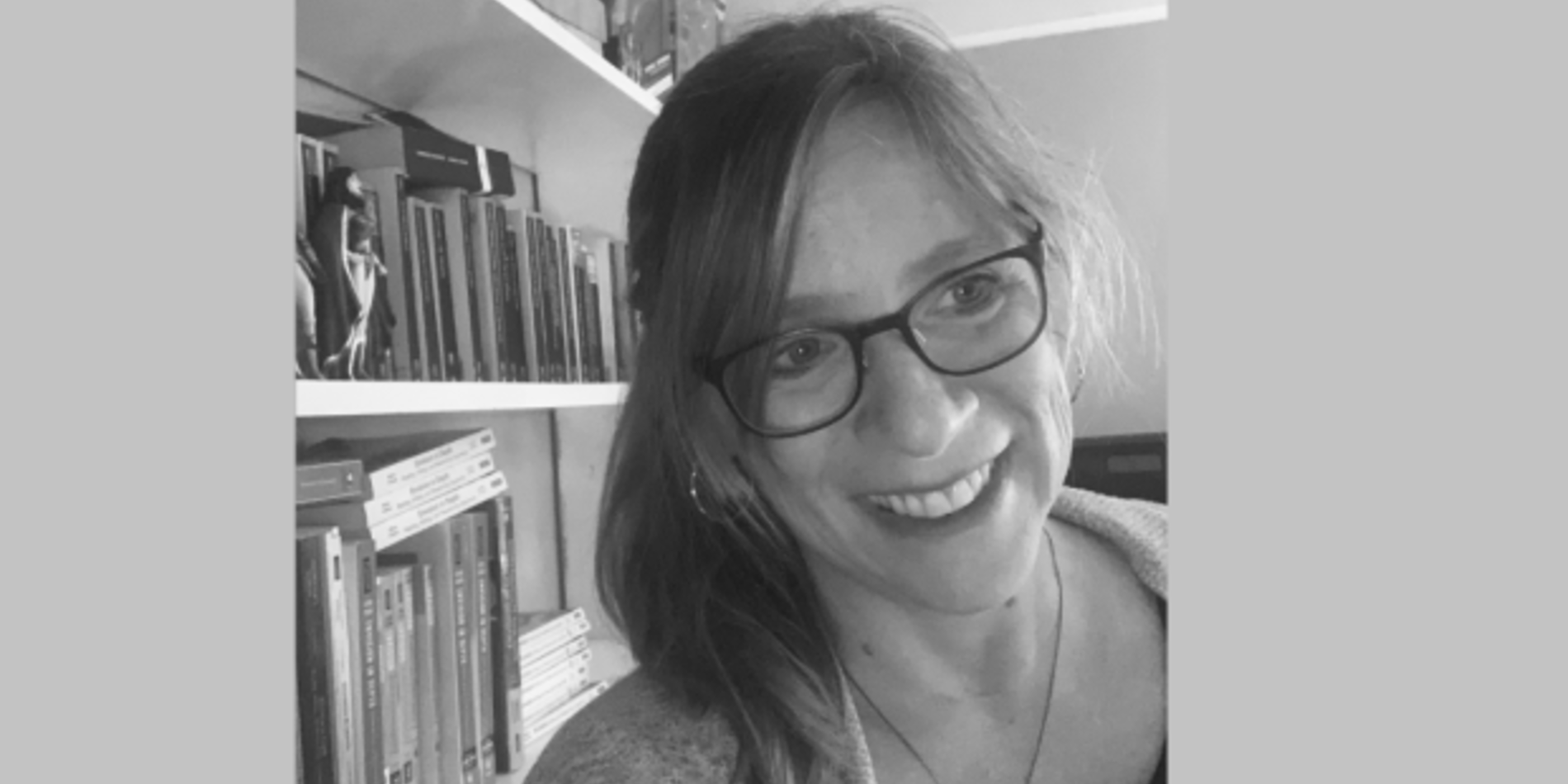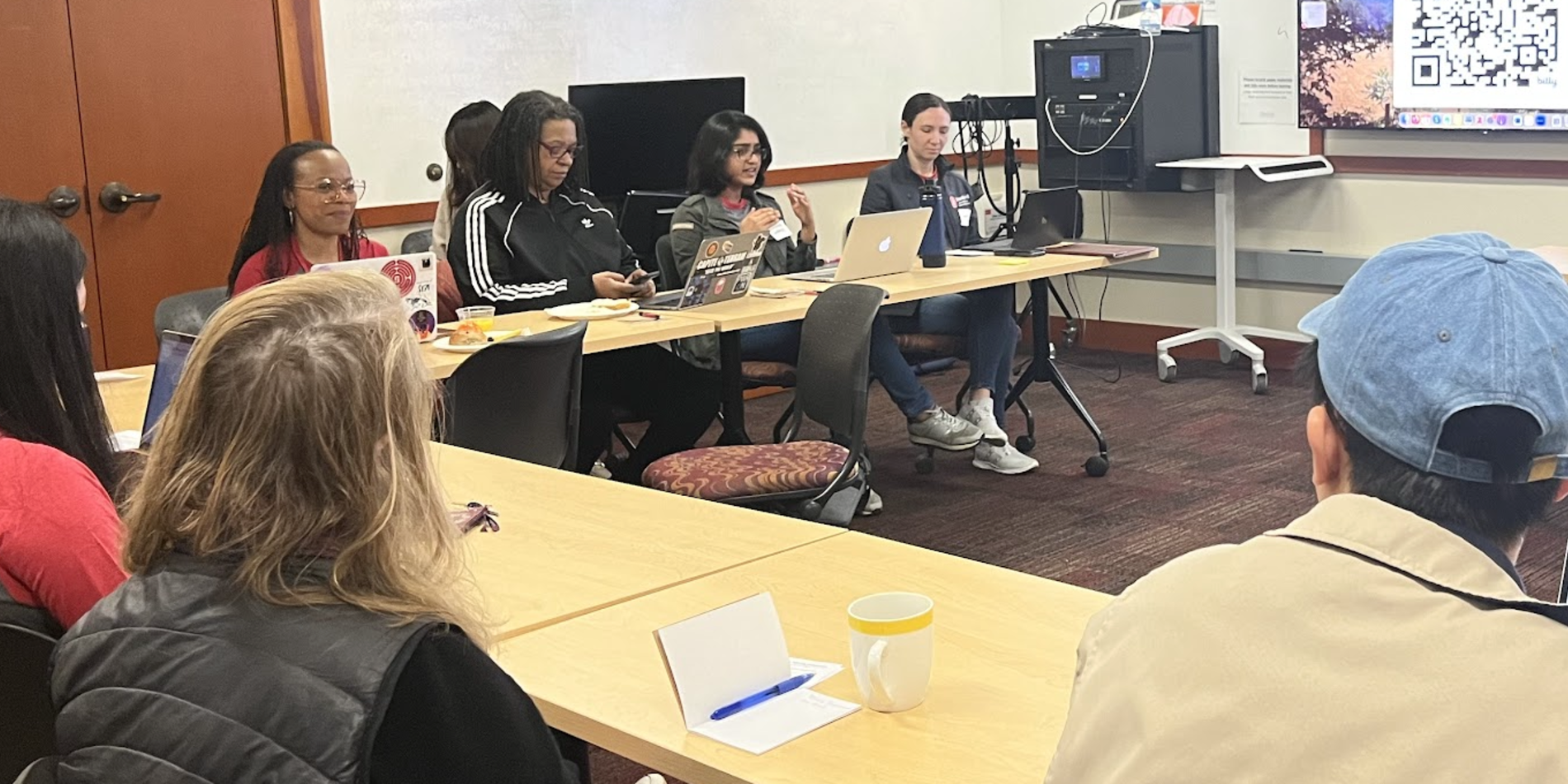Zoom Conferences: Supporting Students’ Writing Development in 1-1 Meetings
In 2020, Stanford students faced unprecedented threats: a deadly pandemic that moved their classes online; ongoing police violence against communities of color; uncertain, rapidly changing, and quixotic visa requirements; a presidential campaign that actively called on white supremacists to garner voter support; ongoing climate disasters; and widespread financial insecurity due to growing unemployment. Why does 1-1 teaching matter so much in these circumstances? And what does 1-1 teaching look like in Stanford’s Program in Writing and Rhetoric? PWR lecturers tutor four hours per week in the Hume Center for Writing and Speaking, keep office hours, and conference formally with their students throughout the quarter. In these conferences, lecturers are able not only to meet writers where they’re at, tailoring their teaching approach and instruction to address the students’ immediate needs, but also to address the stress of intersecting crises. This timely and compassionate pedagogy is especially crucial as we work to support student learning in a time of disruption.
PWR lecturers have always staffed office hours, but during the pandemic have found them even more consistently patronized. Students will come to ask questions about particular writing challenges or a lesson presented in class. They may want to reflect further on an assigned reading or presentation discussed in class. Or, they may need to check in with us about personal challenges: extreme fatigue from taking on extra work to support their families, struggles with internet connections, worries about visas and stateside housing, among many other things. Even over Zoom, these conversations can support student writers through rough patches. We know that we bring our whole selves to our writing. Office hours provide dedicated space and time to address basic needs, mental health, and invention and revision strategies.
Conferences serve similarly diverse functions but because they are a formal part of PWR pedagogy and required for students, their reach is more broad and consistent. Teaching in small, 2-D boxes over Zoom, it can be more difficult to read students’ feelings, understand their reactions to lessons or materials, and build rapport. 1-1 conferences provide a meaningful antidote to this dilemma, especially because they happen at least once for every major assignment in the PWR sequence. At the beginning of every conference, Lisa Swan checks in with each student: “How are you? How’s school going this quarter? Where are you at with your writing and how are you feeling about it?” In this way, the student is invited to share whatever may be on their minds. To further support connection with students, Mutallip Anwar requires they have their cameras on during conferences if they are able, as they may not always during class for a variety of reasons.
Mutallip and Lisa notice both continuities and differences between in-person and online conferences. Mutallip is still meeting after first drafts and he does so after he has given feedback on the essays. He notes that conferences continue to take some of the pressure off of what some students may perceive as high stakes assessment; instead, the conference is about the exchange of ideas. But because he doesn’t have to commute this year, he doesn’t have to schedule his conferences so tightly on the days he’s on campus. Instead, he can spread them over many days, which can also better serve students’ needs: they can select conference times that better align with their writing and thinking needs. Lisa has also adjusted how she gives feedback. Before the conference, she leaves some margin comments, but now she writes her end comment at the end of conference with the students’ input and the trajectory of the conversation fresh in her mind. In this way, the student is helping construct the end comment. Mutallip observes that his conferences over Zoom have also evolved to privilege more of the students’ agency. In the past, they would be meeting in an office, discussing the student work and Mutallip’s comments on his display. Over Zoom, by contrast, students have already read his comments and often already made changes; or, they may come to their conference with specific questions. So they share their screen and, as Mutallip reflects, take control of the conference by walking him through their revisions and articulating their questions and concerns. He believes meeting over Zoom creates a third space, as it’s not in an authority’s office. It “levels the playing field a little” when both teacher and student can share screens.
PWR lecturers have also devised innovative conferencing scheduling and pacing during this time. For example, Harriett Jernigan schedules a conference with her students before the quarter starts. She reflects:
I’m a huge believer in community as the foundation upon which all learning rests. Because of that, I typically reserve the first day or two of instruction to allow everyone to shape and become fully invested in their new classroom community, usually devoting the first class session to small-group storytelling while I politely eavesdrop and learn about each student.
However, when we learned we would begin teaching from home in Spring ‘20, I thought of what a student said at the end of Winter ‘19, when we suddenly had to pivot from F2F to online. “This would be so weird if we didn’t already know each other.” Most of the students chimed in with agreement. Since I rely a good deal on facilitating serendipity to create classroom community, I was dismayed by how Zoom diminished this.
The only way I could create a facsimile of spontaneity and serendipity seemed to center on strengthening the back end of the first day of instruction. Although the first homework assignment consists of a learner biography, it does not necessarily ask for the same kind of information that helps students connect with each other on the first day of class. So as soon as I received my class lists for Spring ‘20, I added the students to Canvas and then sent an email inviting them to meet with me individually for 20 minutes in an optional “pre-conference” before the quarter started.
I was pleasantly surprised that almost everyone signed up for a conference. I gave them a short tour of our Canvas site and then chatted with them, asking them about different facets of their lives. Their answers allowed me to ask about other things that then led me to suggesting how they might benefit the classroom community. For example, a discussion with one student about their interest in both physics and economics as larger systems led me to designating them the “systems person” who would help us see the forest instead of just the trees. That conversation also helped me determine which research group to place them in, giving them the most room in which to blossom while helping others.
The students really appreciated the individual attention, because it gave them a chance to introduce themselves in a low-stakes environment, express their concerns and anxieties about the coming quarter in general, and pose questions they had about the course specifically. It also gave me the information to do my usual call-backs on the first day of instruction. I scheduled pre-conferences again for Fall ‘20 and enjoyed the same level of success. I think it played an even more crucial role than before because these students were starting their college careers in an uncertain and anxiety-provoking context.
Kathleen Tarr has also innovated beyond the conferencing-three-times-a-quarter model. Over Zoom, she meets all students for ten minutes every week between weeks 2 and 10 of the quarter. Students select a day and time of the week and then meet Kathleen consistently at that time across the quarter. Kathleen finds that no one misses a meeting because it’s part of the quarter’s routine. More importantly, students are turning in better drafts in spite of the pandemic, depleted energy, and often inadequate attention to asynchronous activities. That’s because, Kathleen believes, she’s checking in consistently about things like their research questions, their methods, and their research, and doing it before they turn in their drafts so that challenges are identified early in the process. Stronger drafts are “priceless.” She adds that the conferencing requirement spread out this way amounts to at least an hour per day spent conferencing with students. If students need more time than ten minutes in a given week, they come to her office hours and are usually better prepared to talk with her about their work-in-progress. While the conferencing requirement continues to be exhausting, it does establish Kathleen’s investment in students’ real life, well being, and projects. Over Zoom, as many have observed, it’s harder to make an individual connection, but in a 1-1 meeting, you “can actually have eye contact,” she says. Making that connection so regularly across the quarter has been “wonderful,” but Kathleen is quick to add that her approach is what works for her and her goals for her students. She offers her model as “food for thought” to other lecturers.
Lecturers new to PWR are teaching and conferencing online for the first time. Nissa Cannon has been grateful three conferences are required of students. She’s noticed that students who tend to keep their camera off during class, turn it on during conferences, which gives her the chance to better gauge their understanding. Roberta Wolfson notes that “During these conferences, I’m not providing feedback to justify an already determined grade, but rather to help them grow as writers. I think the students really recognize and appreciate this distinction!” Brittany Hull further observes that students seem to appreciate verbal feedback paired with her written feedback. She’s also learned from her conferences and her Hume tutoring that students are often confused by the logistics of assignments: their “various questions serve as a reminder for me to make sure I am as thorough as possible with my directions.” All the new lecturers we were able to talk to emphasized that conferences gave them the chance to build rapport with their students, which contributed meaningfully to both the instructors’ and students’ experiences online. Roberta observed that after the first round of individual conferencing for the RA essay, students seemed more comfortable meeting with her and started making use of office hours more regularly, too. Like Harriett, Nissa’s planning to add to the required three conferences a mini get-to-know-you conference in Week 1 of winter quarter.
Students continuously express their appreciation for PWR’s 1-1 conferencing and Hume tutoring. They say few other programs or instructors offer this kind of personalized and productive contact. When asked what academic rewards they reaped, students highlighted how conferences and tutoring sessions helped them achieve more clarity about assignments and better assess their chosen topics and skill sets. One student remarked that they “felt more free to ask ‘dumb questions’...which ultimately strengthened the writing assignment I was completing.” Other students noted how they learned to engage in a more recursive writing process and “streamline their writing.” Those 1-1 conversations also boosted their confidence in their writing abilities, giving “much-needed bursts of inspiration” and “[sparking] new ideas for writing/research.” One student wrote that they always left office hours “with a plan, and then executed that plan, and felt comfortable and confident in doing so.” These 1-1 encounters helped ”ease...anxiety about turning in [their] first paper,” made them feel “more relaxed and less stressed when it came to completing assignments,” and “more grounded about [their] work.”
Equally important, students found the 1-1 contact with PWR instructors beneficial to their general well-being. Alongside helping them make the transition to life as a college student coping with new technologies, assignments and grading structures, having a place to talk in private affirmed students’ individual value. Students shared how 1-1 conferences made them feel “more comfortable and heard,” “more connected,” and “supported...as a student, writer, and HUMAN!” Students additionally remarked on how rewarding it was to be “told [their] ideas are valid” and have space in which to “lay out some personal ideas [they] wouldn’t have thought of in class.” Moreover, they commented on how their PWR instructors demonstrated they understood “all of us were facing unique and specific challenges.” In addition to “mental check-ins just to see if everything was going all right,” instructors “affirmed [their] emotions and never belittled what [they were] going through,” reassuring students that “it was OK to be struggling and there was no shame in it,” and “put things in perspective and calmed [them] down early on.” As a result, students felt less tension and anxiety and felt “alleviated” and “re-energized” after each meeting. As one student wrote, their 1-1 contact with their PWR instructor “made me more excited and motivated about doing my PWR work. It is my favorite course.”
As Mutallip puts it, the PWR conference is a “friendly, supportive, encouraging space.” At the same time, it’s a space for rigorous thinking, where students often articulate out loud the logic that hasn’t quite shown itself on the page. While the PWR curriculum asks students and instructors alike to accomplish a tremendous amount of work in a short period of time, the joy of conferencing, of connecting over and through ideas, balances out the extreme pressure of the quarter system. 1-1 meetings complement the group dynamic of the classroom and support writing excellence even in the most disruptive times.



